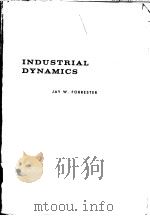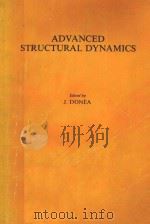《ADVANCED DYNAMICS VOLⅡ》
| 作者 | E.HOWARD SMART M.A. 编者 |
|---|---|
| 出版 | MACMILLAN AND CO. LIMITED |
| 参考页数 | 420 |
| 出版时间 | 没有确切时间的资料 目录预览 |
| ISBN号 | 无 — 求助条款 |
| PDF编号 | 811603688(仅供预览,未存储实际文件) |
| 求助格式 | 扫描PDF(若分多册发行,每次仅能受理1册) |
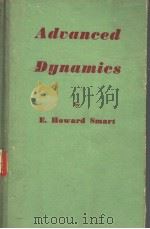
CHAPTER Ⅰ:MOMENTS AND PRODUCTS OF INERTIA1
1.Definitions1
EXERCISES Ⅰ12
2.Given the moments and product of inertia of a lamina about rectangular axes Ox,Oy in its plane,to find the moment of inertia about any axis through O in its plane14
3.Equimomental particles for a lamina19
EXERCISES Ⅱ21
4.Moment of inertia about any axes in space22
EXERCISES Ⅲ32
CHAPTER Ⅱ:PLANE KINEMATICS33
1.Two-dimensional or plane motion33
2.Translation and rotation33
3.Composition of translations33
4.Composition of finite rotations about parallel axes34
5.Composition of angular velocities about parallel axes35
6.General displacement of a lamina in its own plane37
EXERCISES Ⅳ41
7.The instantaneous centre and the centrodes42
EXERCISES Ⅴ45
8.Acceleration of points of a rigid body having plane motion50
9.The circle of inflexions56
EXERCISES Ⅵ59
CHAPTER Ⅲ:D’ALEMBERT’S PRINCIPLE AND THE EQUATIONS OF MOTION62
1.Application of Newton’s Second Law of Motion to a rigid body62
2.D’Alembert’s Principle63
3.The equations of motion of a rigid body acted on by finite forces63
4.Motion of the centre of mass64
5.The independence of translation and rotation64
6.Final form of the two-dimensional equations of rotation for finite forces65
7.Summary of results66
8.Motion about a fixed axis under finite forces67
EXERCISES Ⅶ.(Motion about a fixed axis.)70
9.Equations of motion of a body acted on by impulsive forces80
10.Motion of the centre of mass81
11.The independence of trans-lation and rotation81
12.Final form of the rotational equation in two-dimensional impulsive motion81
13.The fundamental equa-tions of impulsive motion in two dimensions82
14.Motion about a fixed axis.Impulsive forces83
EXERCISES Ⅷ85
15.Historical Notes:(1)Huygens,(2)D’Alembert87
CHAPTER Ⅳ:TWO-DIMENSIONAL MOTION OF A RIGID BODY(FINITE FORCES)90
1.Methods of setting out equations of motion90
2.Typical examples90
3.Pure rolling94
4.The equation of energy for a rigid body in two dimensions97
5.Moments of momentum must be about a fixed axis100
EXERCISES Ⅸ101
EXERCISES Ⅹ106
7.Discontinuous friction109
EXERCISES Ⅺ110
8.Principles of conservation of linear and angular momentum118
EXERCISES Ⅻ124
CHAPTER Ⅴ:TWO-DIMENSIONAL MOTION OF A RIGID BODY(IMPULSIVE FORCES)129
1.Motion under impulsive forces129
EXERCISES ⅩⅢ135
EXERCISES ⅩⅣ145
EXERCISES ⅩⅤ150
2.Moments about the instantaneous centre151
3.Initial motions154
EXERCISES ⅩⅥ155
EXERCISES ⅩⅦ168
4.Small oscillations170
EXERCISES ⅩⅧ175
5.Tendency to break177
EXERCISES ⅩⅨ183
CHAPTER Ⅵ:DIMENSIONS AND DYNAMICAL SIMILARITY184
1.Theory of Dimensions184
2.Theory of mechanical similitude185
3.Illustrations of the foregoing principles186
4.The effect of friction187
CHAPTER Ⅶ:MOTION IN THREE DIMENSIONS190
1.Degrees of freedom190
2.Translation and rotation190
3.Com-position of small rotations about intersecting axes196
4.Composi-tion of angular velocities197
5.General motion of a rigid body198
6.The motion of the body being given as in § 5,to find the equivalent screw199
7.The instantaneous axis of rotation when one point of the body is fixed200
EXERCISES ⅩⅩ201
8.Moving axes in three dimensions202
9.Use of moving axis in solid geometry206
10.Euler’s geometrical equations209
CHAPTER Ⅷ:MOTION IN THREE DIMEN-SIONS(continued)212
1.Equations of motion of a rigid body acted upon by finite forces212
2.Euler’s equations for the motion of a rigid body about a fixed point213
3.Moments about the instantaneous axis214
4.Kinetic energy of a rigid body215
5.The momentum of a rigid body216
6.Impulsive motion218
7.Illustrative exercises for finite forces222
EXERCISES ⅩⅪ235
EXERCISES ⅩⅫ239
CHAPTER Ⅸ:LAGRANGE’S EQUATIONS242
1.Generalised Coordinates242
2.Lagrange’s equations242
EXERCISES ⅩⅩⅢ244
3.Deduction of the equation of energy from Lagrange’s equations249
4.Use of Lagrange’s equations in finding the small oscillations of a conservative system about a position of equilibrium251
EXERCISES ⅩⅩⅣ254
5.Lagrange’s equations for impulsive forces260
EXERCISES ⅩⅩⅤ262
6.Use of Lagrange’s equations in determining initial motions267
EXERCISES ⅩⅩⅥ267
7.Ignoration of coordinates.The modified Lagrangian function269
8.Case in which the number of coordinates exceeds the number of degrees of freedom.Method of undetermined multipliers271
9.Reduction to a system with fewer degrees of freedom by use of the equation of energy273
10.Some cases of integration of Lagrange’s equations276
11.Holonomous and non-holonomous systems278
EXERCISES ⅩⅩⅦ280
12.Historical Note:J.L.Lagrange281
CHAPTER Ⅹ:MOTION UNDER NO FORCES282
1.A heavy body supported at its centre of gravity and left to itself282
2.Euler’s equations282
3.Poinsot’s geometrical representa-tion of the motion283
4.Body with two principal moments at the centre of inertia equal284
EXERCISES ⅩⅩⅧ288
5.The Polhode and the Herpolhode in the general case292
6.The Herpolhode294
7.Axes of permanent rotation294
8.Integration of Euler’s equations in the general case when A,B,C are unequal294
9.The Poinsot geometrical interpretation for this case300
10.Sylvester’s theorem on the measure of the time302
EXERCISES ⅩⅩⅨ304
11.Historical note:Euler304
CHAPTER Ⅺ:MOTION OF A TOP OR GYROSTAT305
1.Definitions305
2.The phenomenon of precession and a simple dynamical explanation305
3.Gyrostatic resistance307
4.The steady motion of a top308
EXERCISES ⅩⅩⅩ309
5.The general motion of a top,whose peg O is a fixed point,deduced from the Principles of Energy and Momentum310
6.Rise and fall of the top312
EXERCISES ⅩⅩⅪ315
7.Top spinning on a smooth horizontal plane316
8.The small oscillations of a top318
EXERCISES ⅩⅩⅫ320
9.The gyroscopic compass322
EXERCISES ⅩⅩⅩⅢ328
10.Motion of a solid of revolution on a rough horizontal plane330
EXERCISES ⅩⅩⅩⅣ336
11.Motion of a cone rolling on a rough plane or on another fixed cone338
EXERCISES ⅩⅩⅩⅤ343
12.Ellipsoid spinning on a smooth horizontal plane345
EXERCISES ⅩⅩⅩⅥ350
CHAPTER Ⅻ:HAMILTON’S EQUATIONS;GEN-ERAL THEOREMS ON IMPULSES,ETC355
1.Notation for generalised coordinates355
2.Hamilton’s equations357
EXERCISES ⅩⅩⅩⅦ360
3.Application of the calculus of variations363
4.The solution of the general equations of motion368
EXERCISES ⅩⅩⅩⅧ369
5.The differential equations for S and A371
EXERCISES ⅩⅩⅩⅨ372
6.Jacobi’s Complete Integral372
EXERCISES ⅩL375
7.General theorems on impulses376
EXERCISES ⅩLⅠ379
8.Proofs of the theorems of Bertrand and Kelvin in generalised coordinates383
9.Gauss’Principle of Least Constraint385
EXERCISES ⅩLⅡ388
10.Historical Notes:(1)Jacobi,(2)Hamilton(Sir William Rowan)390
CHAPTER ⅩⅢ:THEORY OF SMALL OSCILLA-TIONS(continued from Chapter Ⅷ)392
1.Introductory392
EXERCISES ⅩLⅢ399
2.Cases of the use of principal coordinates399
EXERCISES ⅩLⅣ401
3.Stability of steady motion402
EXERCISES ⅩLⅤ407
INDEX417
《ADVANCED DYNAMICS VOLⅡ》由于是年代较久的资料都绝版了,几乎不可能购买到实物。如果大家为了学习确实需要,可向博主求助其电子版PDF文件(由E.HOWARD SMART M.A. MACMILLAN AND CO. LIMITED 出版的版本) 。对合法合规的求助,我会当即受理并将下载地址发送给你。
高度相关资料
-
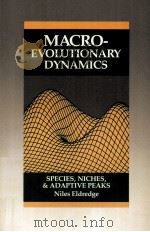
- MACROEVOLUTIONARY DYNAMICS
- 1989 MCGRAW-HILL PUBLISHING COMPANY
-
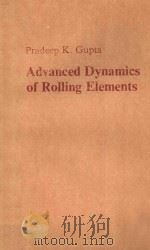
- ADVANCED DYNAMICS OF ROLLING ELEMETS
- 1984 SPRINGER-VERLAG
-

- Shock dynamics
- 1993 Kluwer Academic
-

- Dynamics
- 1990 MACMILLAN EDUCATION LTD
-

- 3RD SEMINAR ON ADVANCED VEHICLE SYSTEM DYNAMICS
- 1987 SWETS NORTH AMERICA INC.
-
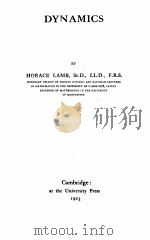
- DYNAMICS
- 1923 AT THE UNIVERSITY PRESS
-

- SPACEFLIGHT DYNAMICS
- 1989 MCGRAW-HILL,INC
-

- PROBABILISTIC STRUCTURAL DYNAMICS ADVANCED THEORY AND APPLICATIONS
- 1995 MCGRAW-HILL,INC
-
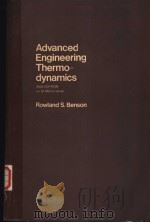
- Advanced Engineering Thermo-dynamics 2ND EDITION
- 1977 PERGAMON PRESS
提示:百度云已更名为百度网盘(百度盘),天翼云盘、微盘下载地址……暂未提供。➥ PDF文字可复制化或转WORD

